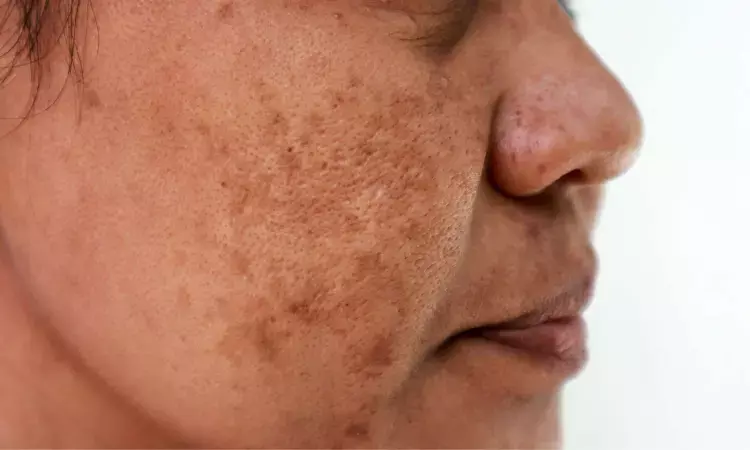- Home
- Medical news & Guidelines
- Anesthesiology
- Cardiology and CTVS
- Critical Care
- Dentistry
- Dermatology
- Diabetes and Endocrinology
- ENT
- Gastroenterology
- Medicine
- Nephrology
- Neurology
- Obstretics-Gynaecology
- Oncology
- Ophthalmology
- Orthopaedics
- Pediatrics-Neonatology
- Psychiatry
- Pulmonology
- Radiology
- Surgery
- Urology
- Laboratory Medicine
- Diet
- Nursing
- Paramedical
- Physiotherapy
- Health news
- Fact Check
- Bone Health Fact Check
- Brain Health Fact Check
- Cancer Related Fact Check
- Child Care Fact Check
- Dental and oral health fact check
- Diabetes and metabolic health fact check
- Diet and Nutrition Fact Check
- Eye and ENT Care Fact Check
- Fitness fact check
- Gut health fact check
- Heart health fact check
- Kidney health fact check
- Medical education fact check
- Men's health fact check
- Respiratory fact check
- Skin and hair care fact check
- Vaccine and Immunization fact check
- Women's health fact check
- AYUSH
- State News
- Andaman and Nicobar Islands
- Andhra Pradesh
- Arunachal Pradesh
- Assam
- Bihar
- Chandigarh
- Chattisgarh
- Dadra and Nagar Haveli
- Daman and Diu
- Delhi
- Goa
- Gujarat
- Haryana
- Himachal Pradesh
- Jammu & Kashmir
- Jharkhand
- Karnataka
- Kerala
- Ladakh
- Lakshadweep
- Madhya Pradesh
- Maharashtra
- Manipur
- Meghalaya
- Mizoram
- Nagaland
- Odisha
- Puducherry
- Punjab
- Rajasthan
- Sikkim
- Tamil Nadu
- Telangana
- Tripura
- Uttar Pradesh
- Uttrakhand
- West Bengal
- Medical Education
- Industry
AOPT-LTL Therapy Improves Melasma via SCF/c-KIT Pathway Inhibition: Study Finds

China: A new study has revealed that AOPT-LTL therapy significantly improves melasma by reducing melanogenesis, inflammation, angiogenesis, mast cell infiltration, and collagen degeneration, likely via inhibition of the SCF/c-KIT signaling pathway.
The study, led by Bingrong Zhou and colleagues from the Department of Dermatology, The First Affiliated Hospital of Nanjing Medical University, China, was published in the Journal of Cosmetic Dermatology. The research assessed both the effectiveness and the biological mechanisms of advanced optimal pulse technology intense pulsed light in low-energy triple-pulse long-width mode (AOPT-LTL) for treating melasma.
To explore this, the investigators first developed an animal model of melasma using guinea pigs exposed to progesterone injections and ultraviolet B radiation. Animals were then treated with three sessions of AOPT-LTL therapy administered weekly. Alongside this preclinical work, 20 patients with melasma underwent three monthly sessions of the same treatment. Their progress was evaluated using the Modified Melasma Area and Severity Index (mMASI) and the Erythema Index (EI).
The study led to the following findings:
- In the animal model, AOPT-LTL treatment significantly reduced pigmentation and suppressed genes associated with melanin production.
- The therapy decreased mast cell infiltration and lowered the expression of inflammatory and angiogenic factors.
- By inhibiting angiogenesis and reducing collagen breakdown, the treatment improved skin quality and alleviated signs of photoaging.
- AOPT-LTL also blocked the SCF/c-KIT signaling pathway, which regulates mast cell activity and proliferation, suggesting a key molecular mechanism behind its effects.
- Clinical results were consistent with the experimental findings, showing clear therapeutic benefits in patients.
- After three sessions, patients experienced reduced melanin levels and erythema, along with improved mMASI and EI scores.
- The improvements demonstrated both lightening of pigmentation and reduced redness, supporting its effectiveness in enhancing skin tone and texture in melasma.
The authors emphasized that AOPT-LTL therapy offers multiple benefits beyond pigment reduction, targeting inflammation, angiogenesis, and structural degeneration, which are all key processes involved in melasma pathology. By acting on several pathways simultaneously, it may provide a more comprehensive approach compared to conventional treatment modalities.
However, the researchers also acknowledged certain limitations. The study lacked direct head-to-head comparisons with conventional IPL methods, making it difficult to quantify its relative advantages. The sample size of patients was small, and the follow-up period was short, meaning long-term recurrence rates could not be fully assessed. Further laboratory studies are also required to confirm the precise mechanisms of mast cell inhibition observed in vivo.
"The study demonstrated that AOPT-LTL therapy can effectively treat melasma through its broad-spectrum action on melanogenesis, inflammation, vascular changes, and collagen degradation. With its ability to target multiple biological pathways, it shows promise as a novel therapeutic option for patients with melasma, although larger and longer clinical trials are needed to validate its long-term efficacy and safety," the authors concluded.
Reference:
Wang, J., Wang, X., Gu, L., Shi, Z., Xu, Z., Shen, S., Gu, L., Chen, L., Ju, L., Jin, C., Zhou, B., & Hua, H. (2025). Efficacy of Intense Pulsed Light AOPT-LTL Technique in the Treatment of Melasma: An In Vivo and Clinical Study. Journal of Cosmetic Dermatology, 24(9), e70443. https://doi.org/10.1111/jocd.70443
Dr Kamal Kant Kohli-MBBS, DTCD- a chest specialist with more than 30 years of practice and a flair for writing clinical articles, Dr Kamal Kant Kohli joined Medical Dialogues as a Chief Editor of Medical News. Besides writing articles, as an editor, he proofreads and verifies all the medical content published on Medical Dialogues including those coming from journals, studies,medical conferences,guidelines etc. Email: drkohli@medicaldialogues.in. Contact no. 011-43720751
Next Story


